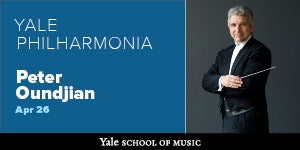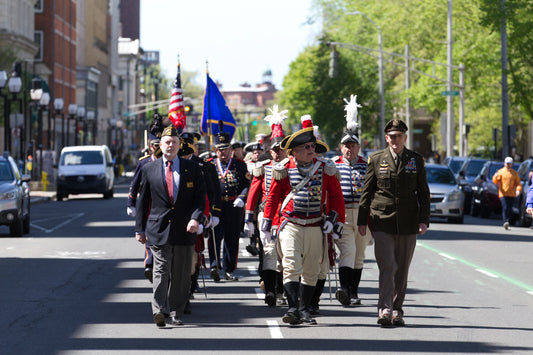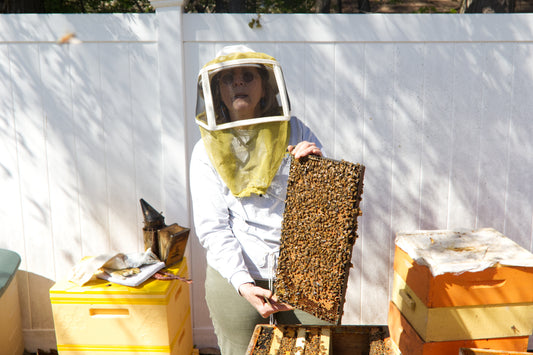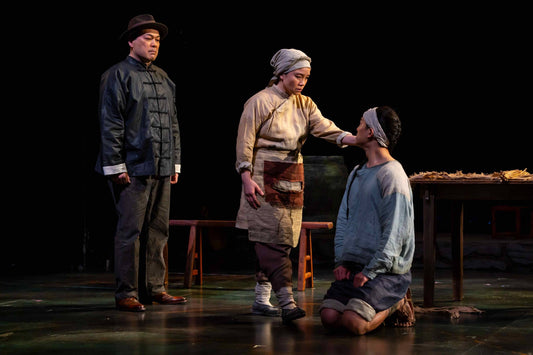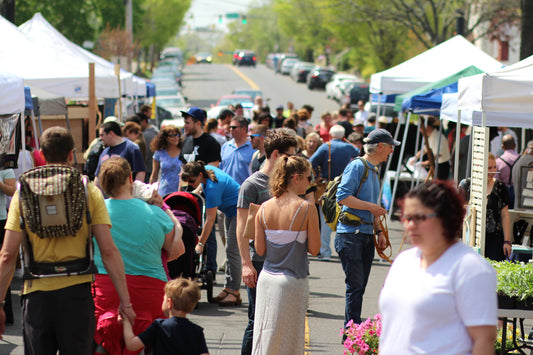In the tale of New Haven’s history, much is made of those hardy English Puritans who arrived in 1638. Yet this city has been profoundly shaped by those who arrived later—by choice or by force—and whose stories are sometimes overlooked. Among them was the city’s first Jewish family, which, according to the diary of then-Yale president Ezra Stiles, arrived in 1772.
The unnamed family of three adult brothers with “an aged mother and a widow and her children, being all about 10 or 8 souls Jews, with 6 or 8 Negroes” were the colony’s “first real Jews,” Stiles wrote, as quoted in Rollin G. Osterweis’s Three Centuries of New Haven (1953). (Stiles was discounting the presence of brothers Jacob and Solomon Pinto, Portuguese Jews who first appear in colonial records in 1724 and who had reportedly “renounced Judaism and all religion.”) The Yale president wrote that a New Haven doctor had called on the Jewish family and found them “worshipping by themselves in a room in which were lights and a suspended lamp.”
sponsored by
It would be another 68 years before the city’s first synagogue was established. By that time, many Jewish immigrants had arrived from Bavaria in Germany and “opened small stores, becoming dry good merchants, proprietors of tailoring establishments, druggists, and restaurateurs, with one or two large wholesalers,” Osterweis writes. In 1840 this community formed Mishkan Israel, worshiping in a space above a downtown store. They were a few years ahead of the state of Connecticut, which officially permitted Jews to “form religious societies” in 1843, lagging far behind neighbors New York, whose first Jewish temple was dedicated in 1730, and Rhode Island, where Touro Synagogue, the oldest surviving synagogue building in America, was finished in 1763.
Mishkan Israel eventually moved to Court Street, between Orange and State Streets, where a former Congregational church was converted to a temple. The temple was divided in 1857 by what Osterweis calls “an orthodox offshoot… created by the split over Reform Judaism,” leading to the formation of B’nai Sholom Congregation. Then, in 1896, Mishkan Israel laid the cornerstone for “a large brick building at Orange and Audubon streets” in the Spanish Renaissance style—today the Educational Center for the Arts. B’nai Sholom disbanded in 1936, but Mishkan Israel continues to worship today in a 1960 building on Ridge Road in Hamden.
New Haven’s influx of Jewish people in the mid-19th century wasn’t easily embraced by long-established Christian neighbors. The article “Jews in New Haven: 1840-1860” by Matthew I. Cohen reports that the New Haven Register greeted the founding of Mishkan Israel by fretting, “Whilst we have been busy converting the Jews in other lands, they have outflanked us here, and effected a footing in the very centre of our own fortress.”
In another history piece that, like Cohen’s, was published by the Jewish Historical Society of Greater New Haven, Neil Hogan writes of a feud over a sermon preached by Reverend George Lansing Taylor of George Street Methodist Episcopal Church in 1876. At the time, Hogan reports, sermons were summarized in the Journal and Courier newspaper, where Taylor’s was read by Rabbi Judah Wechsler of Mishkan Israel, who didn’t take kindly to the minister’s characterization of the Jewish nation as an “unfruitful tree” that was neglectful of God. A polite but forceful public debate ensued, culminating in Taylor’s invitation to Wechsler to preach at George Street. “Thus it was that on Sunday morning, January 30, 1876, a Jewish rabbi, apparently for the first time in New Haven history, mounted the pulpit of a Christian church,” Hogan writes. The rabbi ended his remarks with a declaration of unity: “May our intercourse in the future ever be of so friendly a nature as it has been in the past.”
Another wave of Jewish immigration to New Haven and other American cities was precipitated by the mass murder of Russian Jews in pogroms beginning in 1881. “From then until the beginning of the First World War large numbers of Jews came into the Elm City from Poland, the Ukraine, Roumania, and other parts of Eastern Europe,” Osterweis writes. The Russian newcomers worshiped in “several temporary meeting places” before founding Congregation B’nai Jacob in 1882, according to a history of the congregation by Barry E. Herman. Beginning on Temple Street, B’nai Jacob moved to George Street in 1912 and finally to its current home in Woodbridge in 1961.
There was now a critical mass of Jews in New Haven—enough to inspire the creation of Young Men’s and Young Women’s Hebrew Associations in the 1910s, which together eventually became the Jewish Community Center of Greater New Haven. The organization dedicated its own building in 1954 on Chapel Street—now home to the Yale School of Art—and opened its present home along Amity Road in Woodbridge in 1993.
Before a mid-century migration to the suburbs, many of New Haven’s Jews lived on what former resident Abraham Silverman called a “vibrant and exciting” three-block stretch of Oak Street, now altered, perhaps beyond recognition, by the frontage roads and Yale New Haven Hospital. Silverman, whose family owned and operated a Jewish delicatessen, recalls a sweet potato peddler, a “coterie of push cart and horse-drawn wagon peddlers with their assorted merchandise or produce” and a fortune-telling Italian organ grinder with a trained parrot.
By the mid-1920s, New Haven had more than 60 Jewish “religious, charitable, fraternal and Zionist organizations,” as well as a Jewish Home for Children and a Jewish Home for the Aged, according to the Jewish Virtual Library. The city’s first Jewish mayor, Samuel Campner—who was also its youngest—was in office from 1917, when he was just 29 years old, until shortly before his untimely death in 1934. Jewish students were also present at Yale, having first been admitted sometime in the 1800s, according to the Joseph Slifka Center for Jewish Life at Yale, although quotas would restrict their number to approximately 10 percent of the total student body until the 1960s.
Today, greater New Haven’s Jewish population numbers approximately 23,000, according to a 2010 study sponsored by the Jewish Federation of Greater New Haven, and the Jewish Virtual Library cites 13 synagogues in New Haven, Orange, Woodbridge and Hamden. “As my ancestors planted for me before I was born… so do I plant for those who come after me,” says a Talmud passage quoted on the cover of the Jewish Foundation of Greater New Haven’s 2017 annual report.
Little did New Haven’s first Jewish family know how their plantings would grow.
Written and photographed by Kathy Leonard Czepiel. Images depict the original home of Congregation Mishkan Israel, now the location of Educational Center for the Arts.


